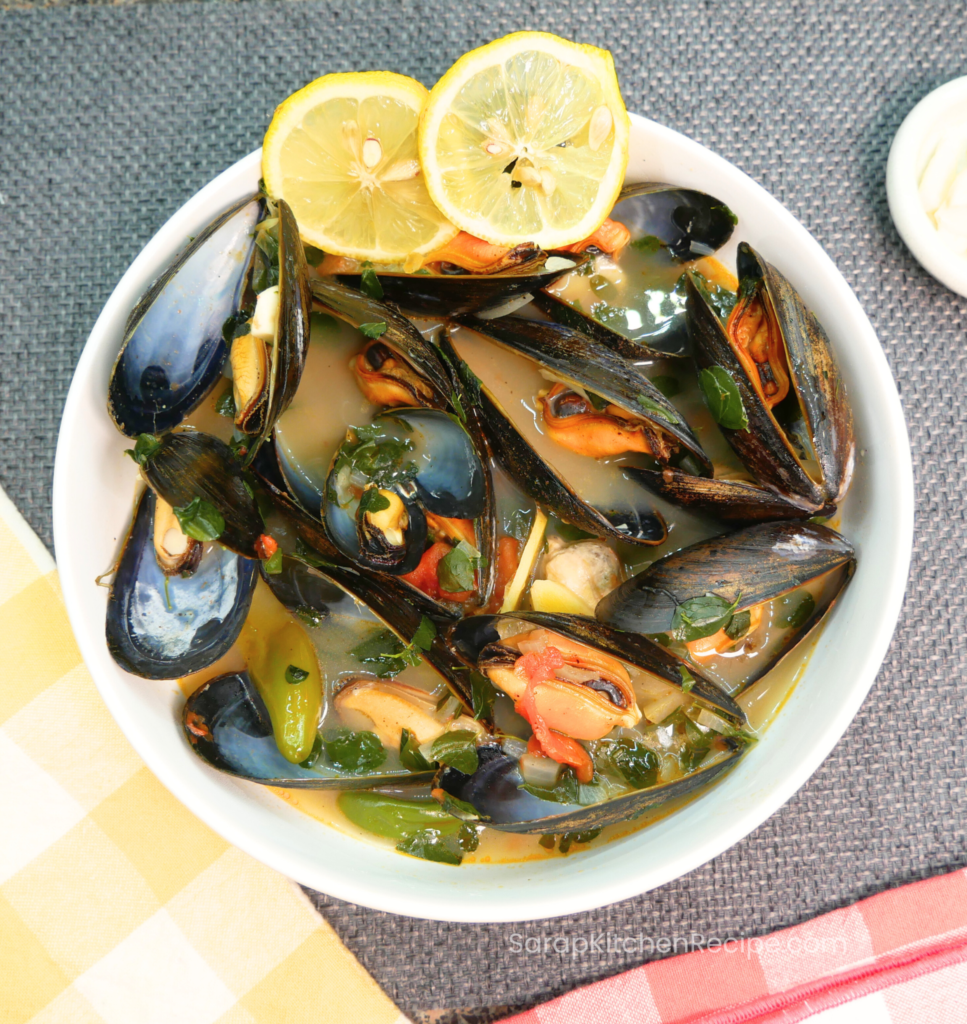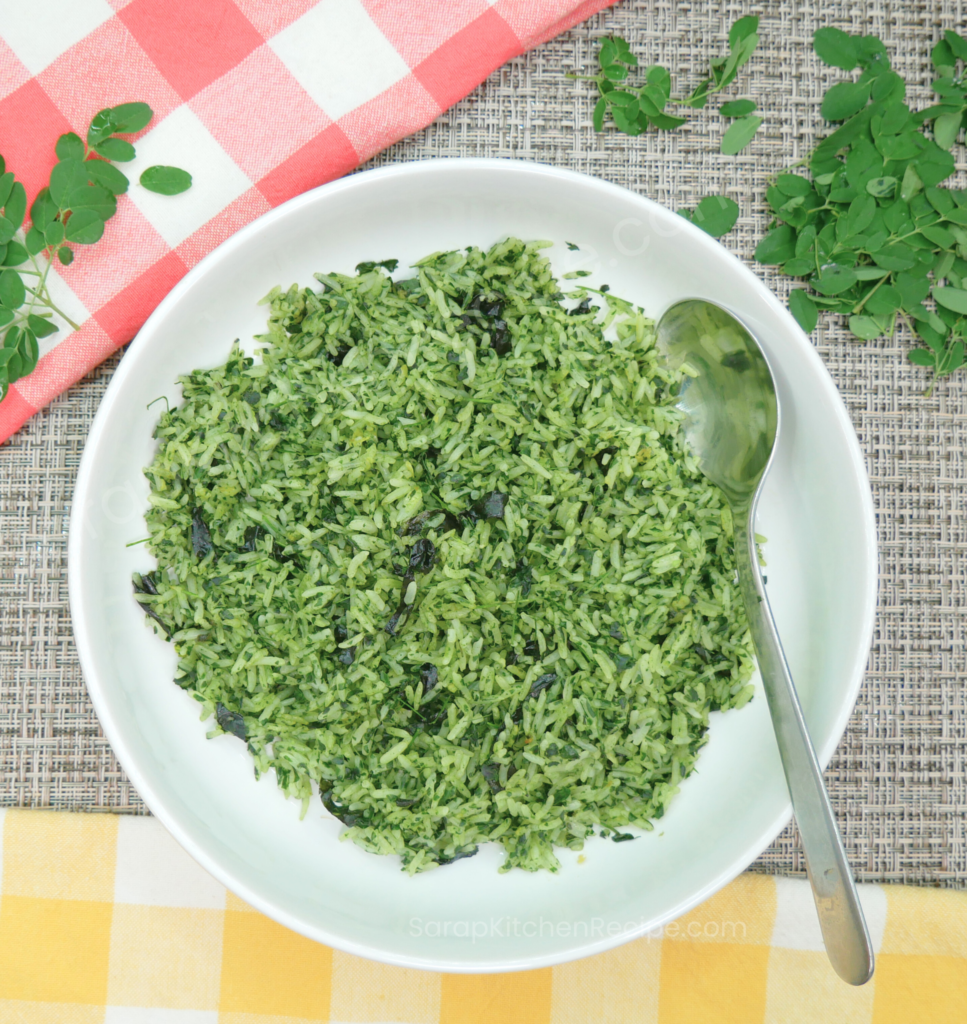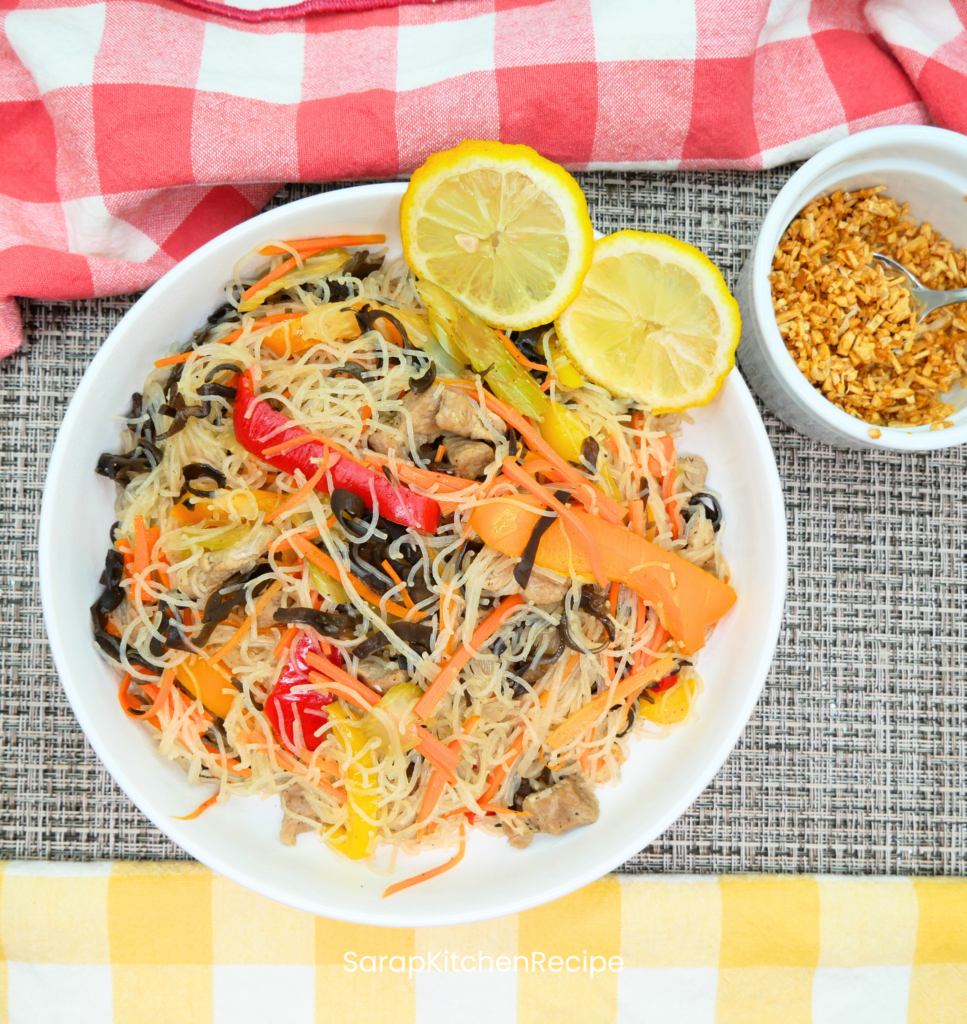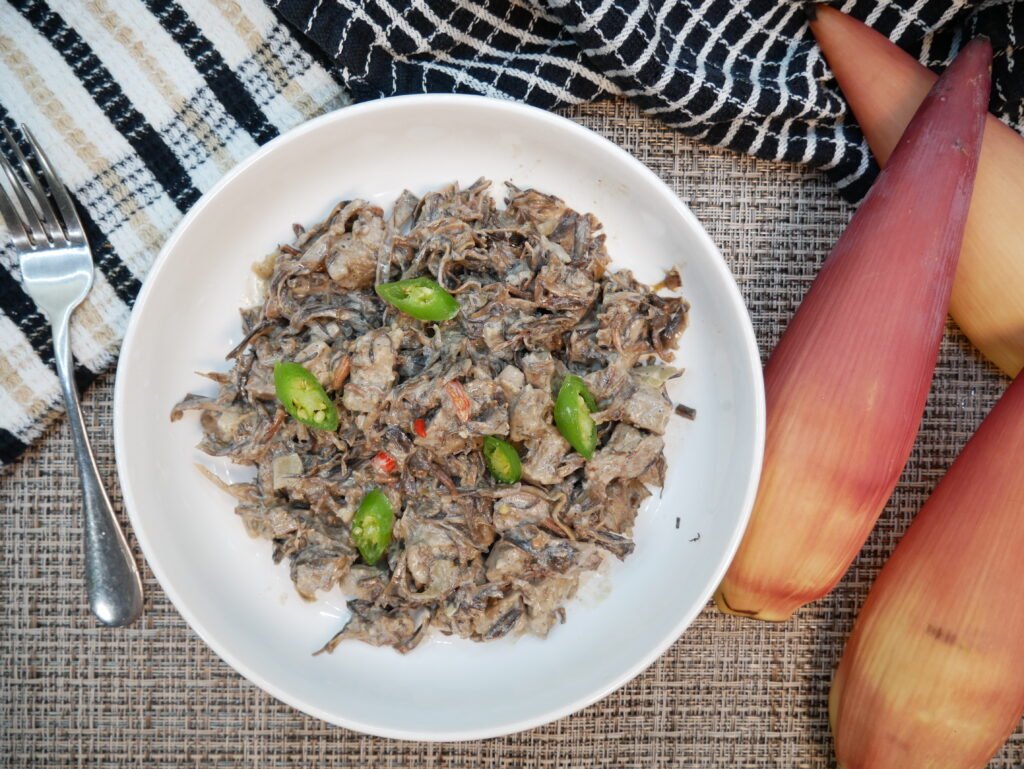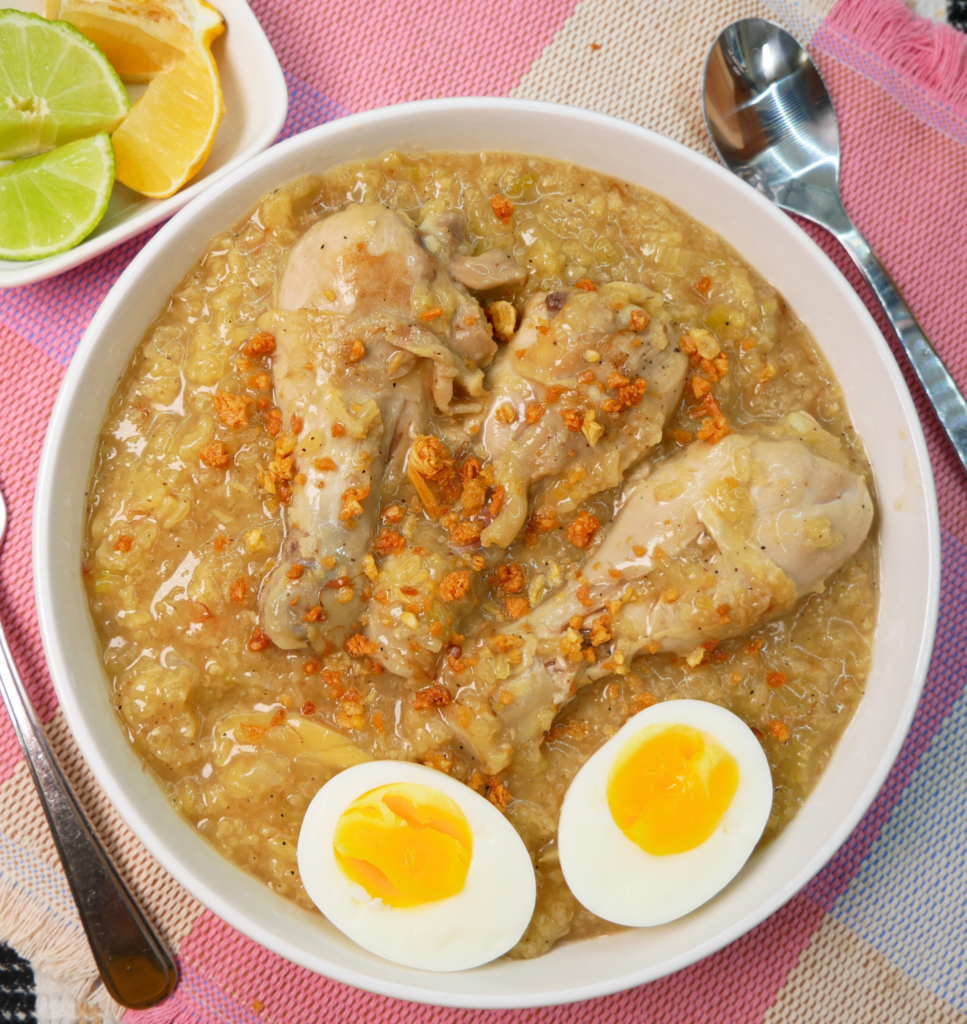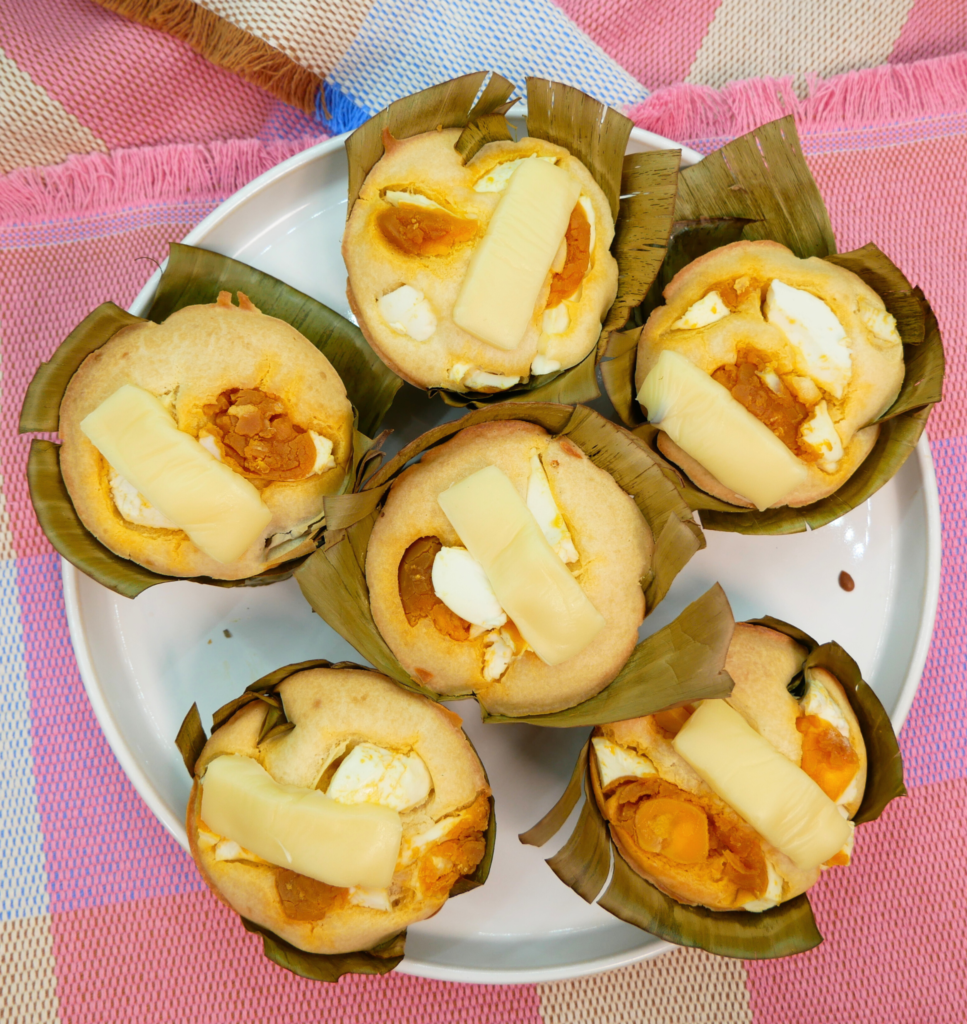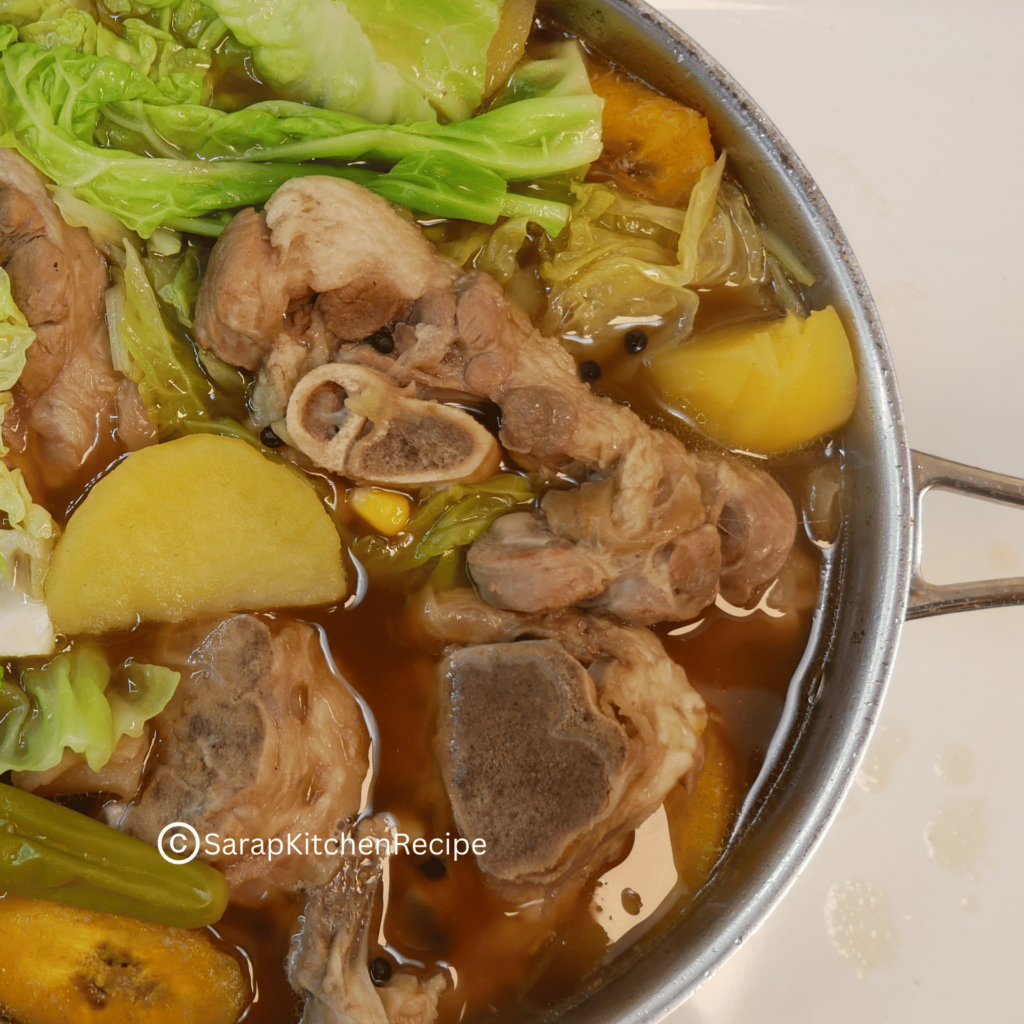
Ever feel like you just want a simple, nourishing meal after a long day? Nilagang Baboy is the perfect Filipino soup that provides nutrients from the bones, including collagen, which our body needs for healthy joints and skin. It’s a one-pot dish where you can throw everything together and let it simmer, making it an easy option for dinner. I love making this soup during winter when I need something warm, comforting, and packed with nutrition. With just a few simple ingredients, you’ll have a flavorful, collagen-rich meal that’s perfect for keeping you healthy and satisfied.
Table of Contents
ToggleWhy Use Pork Hock for Nilagang Baboy?
Using pork hock gives the soup a unique depth you won’t get from other cuts. Why? The gelatin from the hock creates a silky texture in the broth that’s downright irresistible. Plus, it brings out a natural richness you’ll love. If you’re looking for something leaner, you can substitute pork ribs or pork shoulder, but the broth might be a little lighter.
Here’s a tip: Clean the pork hock before cooking. Just a quick boil and rinse, and your broth will stay clear and delicious.
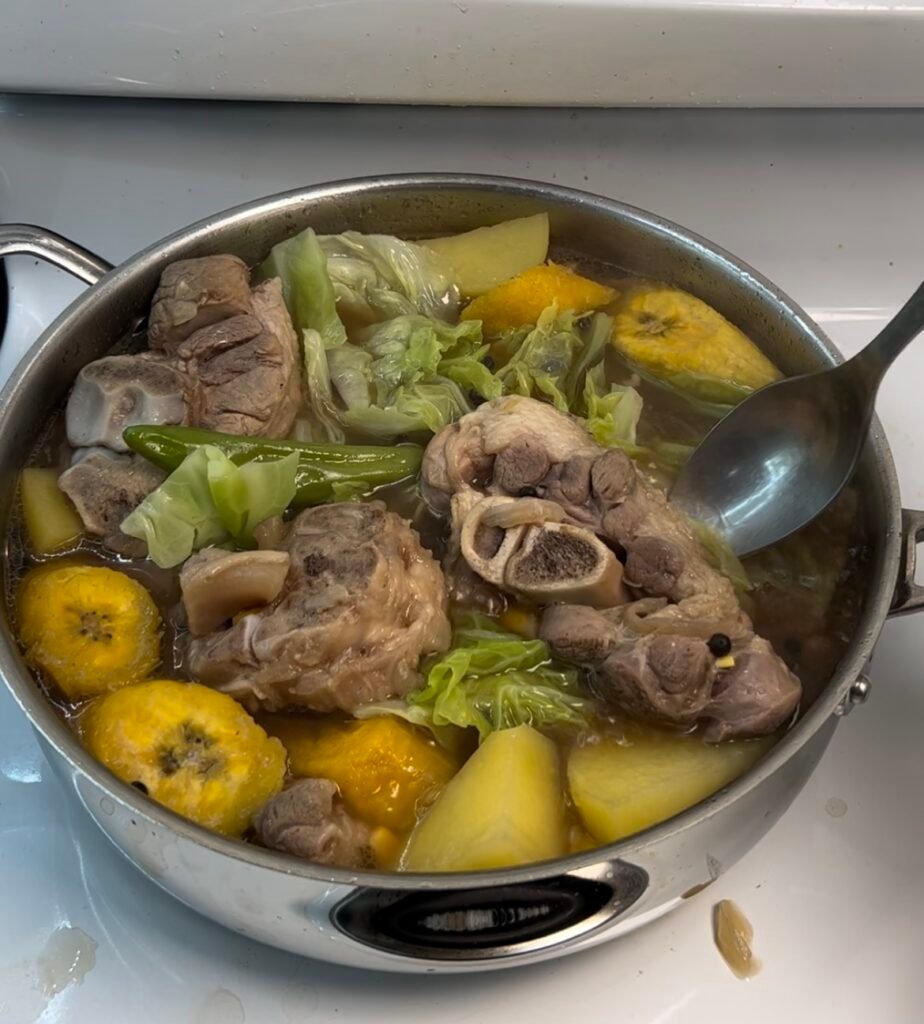
The Best Vegetables to Use for Nilagang Baboy
- Potatoes: I love how potatoes slightly thicken the broth and add a hearty, satisfying substance to the dish. However, if you prefer your potatoes not too mushy and with more texture, you can simply reduce the cooking time.
- Corn: Whether fresh, frozen, or canned, corn brings a touch of sweetness and texture, complementing the savory broth and meat. Personally, I use frozen corn when I can’t find fresh corn, and it works perfectly every time.
- Cabbage: Cabbage brings a mild flavor and a satisfying crunch that balances the richness of the pork. It also absorbs the flavors of the broth, making it a great addition.
- Saba Bananas: This might surprise you, but saba bananas (or plantains) bring a mild sweetness that balances the savory pork. If you don’t have saba, regular plantains are a great substitute. And if bananas in your soup aren’t your thing, feel free to skip them—the dish will still be delicious.
How to Season Nilagang Baboy for the Perfect Flavor
Let’s talk flavor. Fish sauce is the star here—it gives the broth that salty, umami-rich depth. While soy sauce or salt can be used in a pinch, I highly recommend sticking with fish sauce for an authentic taste.
- Fish Sauce: Start with a little and adjust as needed. It’s strong, so taste as you go!
- Pepper: Whole peppercorns slowly release their warmth into the broth. If you’re using ground black pepper, reduce the amount to avoid overpowering the dish.
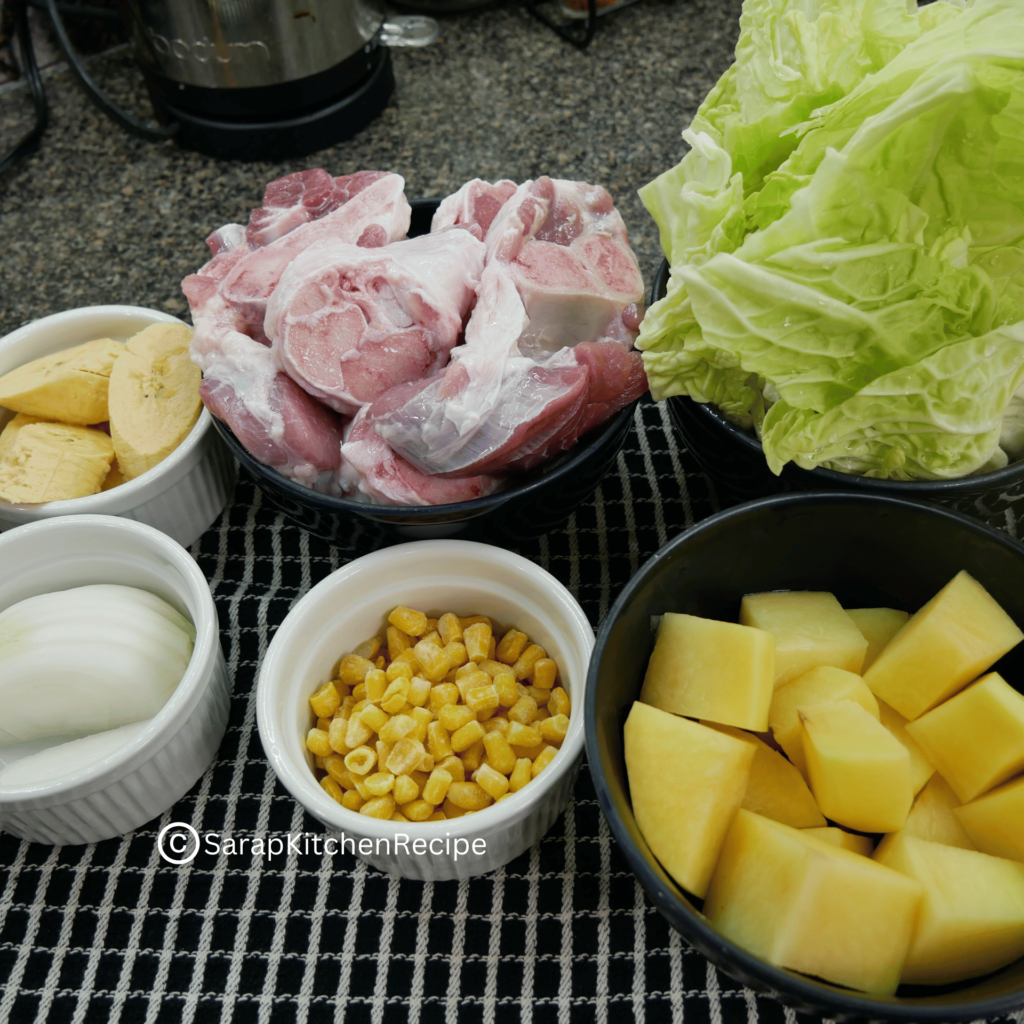
Why Cabbage is a Must in Nilagang Baboy
Cabbage adds more than just flavor—it plays a key role in balancing the dish. It brings a refreshing crunch that contrasts with the tender meat and starchy potatoes, making each bite more satisfying. Cabbage also absorbs the broth, infusing it with the rich, savory flavors of the soup.
I usually stick with regular green cabbage for its firmness and slightly sweet flavor. But if you prefer a softer texture or a slightly lighter taste, Napa cabbage or bok choy are great alternatives. Napa cabbage has a milder, almost buttery flavor, while bok choy adds a delicate crunch with a hint of bitterness, giving you flexibility in how you want to customize your Nilagang Baboy.
Whether you’re using green cabbage, Napa cabbage, or bok choy, this vegetable is a must for balancing the richness of the broth and adding variety to the texture of the dish.
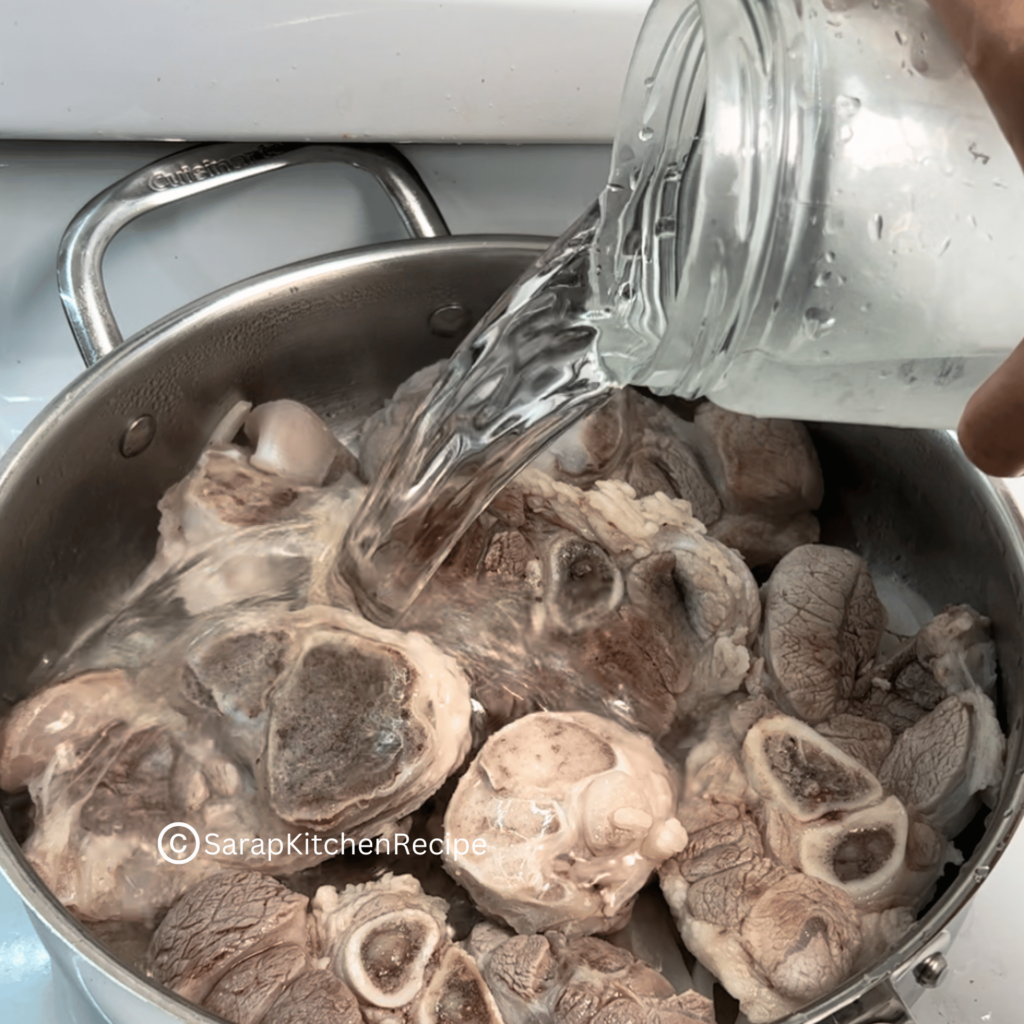
Cooking Tips for the Perfect Nilagang Baboy
Here are a few simple tips to make sure your Nilagang Baboy turns out perfect:
- Slow Simmer for Flavor: Allow the pork hock to simmer on low heat for a longer time. This helps extract maximum flavor and makes the meat super tender.
- Skim the Broth: As the soup simmers, skim off any impurities or foam that rise to the surface. This keeps your broth clear and flavorful.
- Add Vegetables in Stages: To avoid overcooking, add vegetables at different times. Start with the potatoes, then add corn, and finally the leafy greens like cabbage or bok choy.
- Enhance with Fish Sauce: Fish sauce is strong, so start with a little. Taste and adjust until the flavors are balanced.
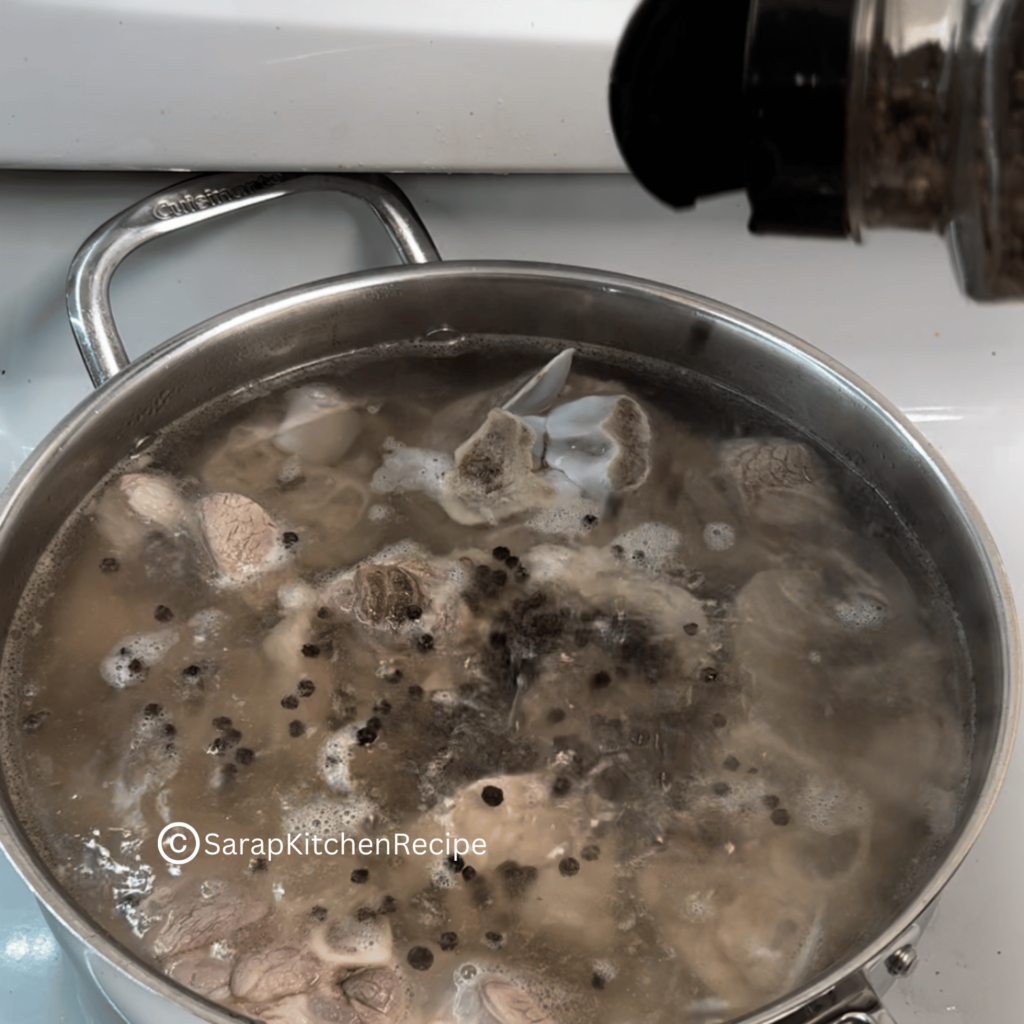
How to Make Nilagang Baboy
Here’s my go-to method for making Nilagang Baboy:
- Clean the Pork Hock: Boil enough water to cover the pork hock in a pot. Once the water is boiling, add the pork hock and let it boil for 5 minutes. Remove the pork hock, rinse it under cold water, and set it aside.
- Cook the Pork Hock: In a large pot, add the cleaned pork hock and about 8 cups of water. Toss in some peppercorns. Bring the water to a boil, then lower the heat to a simmer. Cover the pot and let it cook for 1.5 to 2 hours, or until the pork hock is tender.
- Add Vegetables: Once the pork hock is tender, add the potatoes, saba banana (or plantain), and corn. Let it cook for about 10 minutes, or until the potatoes are tender.
- Season: Stir in the fish sauce. Taste the broth and adjust the seasoning with salt if needed.
- Add Greens: Add the cabbage and bok choy (or pechay) to the pot. Let them cook for about 5 minutes, just until wilted and tender.
- Serve: Serve the Nilagang Baboy hot with steamed rice. Enjoy the comforting flavors of this classic Filipino dish!
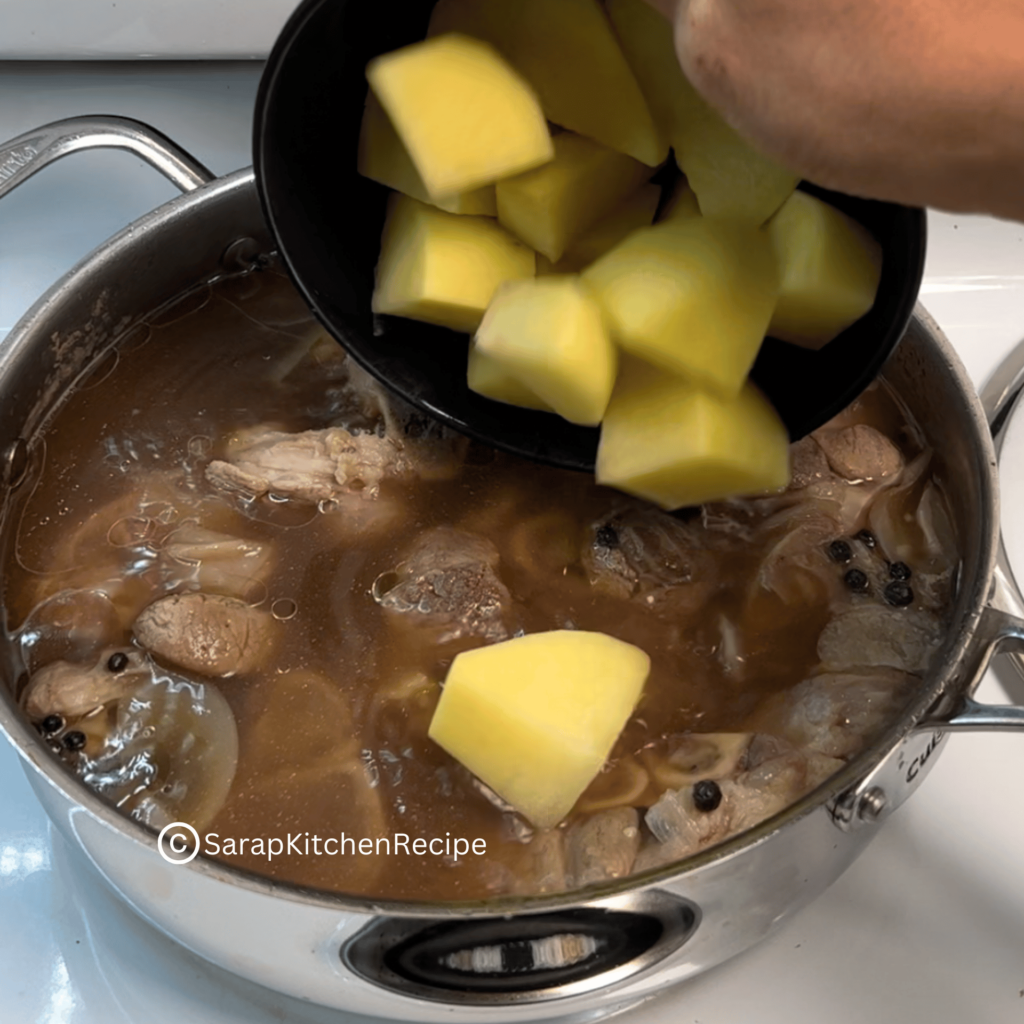
Can I Make Nilagang Baboy in an Instant Pot?
If you’re short on time, you can absolutely make Nilagang Baboy in an Instant Pot or pressure cooker. I’ve tried it, and it’s a game-changer! It gives you tender pork and a flavorful broth in less time than the traditional stovetop method. After cleaning the pork hock, I add all the ingredients (except for the greens) into the Instant Pot. I set it on high pressure for about 30-35 minutes. Once it’s done, I release the pressure and add the cabbage and bok choy. With the sauté setting, it takes about 5 more minutes to cook the greens. The result is just as delicious, with the pork falling right off the bone, but in a fraction of the time. This method is perfect for those busy days when you still want a home-cooked meal but don’t have hours to spend in the kitchen.
How Do I Store and Reheat Nilagang Baboy?
I always make a big batch of Nilagang Baboy, and the best part is, it stores really well! If I have leftovers, I let the soup cool down completely before transferring it into an airtight container. When it’s time to reheat, I simply warm it up on the stovetop over medium heat. If the broth thickens, I add a little water to get it back to the right consistency. If you’re not planning on finishing it within a few days, you can freeze Nilagang Baboy for up to 1 months. Just a tip—remove the cabbage before freezing, as it can get mushy when thawed and reheated. It’s an easy way to enjoy a comforting bowl of soup whenever you want!
What Can I Serve with Nilagang Baboy?
Whenever I make Nilagang Baboy, I always serve it with steamed white rice. The rice soaks up the savory broth, making each bite satisfying. To elevate the dish, I sprinkle toasted garlic on top for a delicious crunch.
One of my favorite ways to enjoy this soup is with sawsawan, a dipping sauce my mom taught me. I mix soy sauce, freshly squeezed calamansi, and chili for a tangy, spicy kick. First, I sprinkle the soup with toasted garlic, then I have the sawsawan on the side, adding a delightful contrast to the rich flavors.
If I want more greens, I often prepare sautéed vegetables like green beans or spinach with garlic, making the meal even more wholesome.
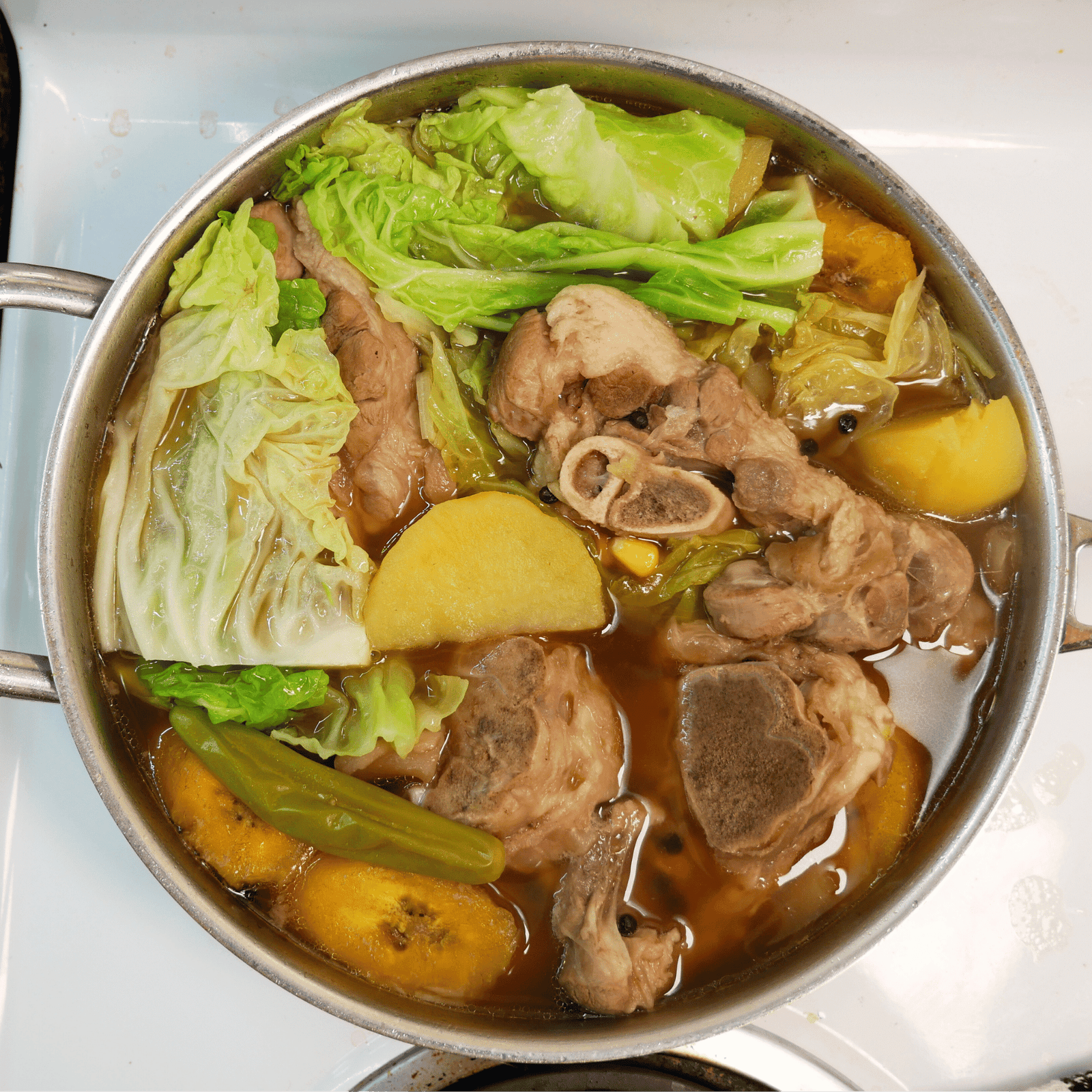
Nilagang Baboy with Pork Hock
Ingredients
- 1 lb pork hock, cleaned
- 4 cups water
- 1/2 tsp whole peppercorns
- 1 medium potato, peeled and quartered
- 1 saba (banana plantain), peeled and sliced
- 1 corn, cut into 3 pieces
- 1/2 tbsp fish sauce (or to taste)
- 1/2 small cabbage, quartered
- Salt, to taste
- 1/2 bunch of bok choy or pechay
Instructions
- Start by cleaning the pork hock. Boil enough water to cover the pork hock in a pot. Once the water is boiling, add the pork hock and let it boil for about 5 minutes. Remove the pork hock from the pot, rinse it under cold running water, and set aside.
- In a large pot, add the cleaned pork hock and 4 cups of water. Add the peppercorns. Bring the water to a boil, then reduce the heat to a simmer. Cover the pot and let it cook for about 1.5 to 2 hours, or until the pork hock is tender.
- Once the pork hock is tender, add the potato, banana plantain, and corn to the pot. Let it cook for about 10 minutes, or until the potato and banana are tender.
- Add the fish sauce to the pot. Taste and adjust the seasoning with salt as needed.
- Add the cabbage and bok choy (or pechay) to the pot. Let them cook for about 5 minutes, or until they are wilted and tender.
- Once the vegetables are cooked to your liking, turn off the heat. Serve the Nilagang Baboy hot with steamed rice.
Notes
- To get the most flavor out of your Nilagang Baboy, let the pork hock simmer on low heat for a longer time. This slow cooking process allows the meat to become incredibly tender and infuses the broth with a rich, deep flavor. If you’re short on time, you can use a pressure cooker to speed up the process, but nothing beats the depth of flavor you get from a long, slow simmer. Also, make sure to skim off any impurities that rise to the top of the broth to keep it clear and clean.

